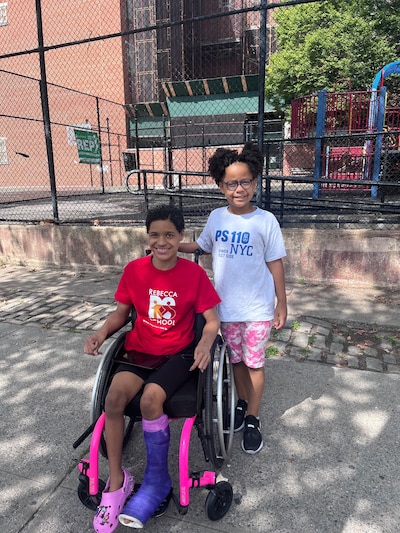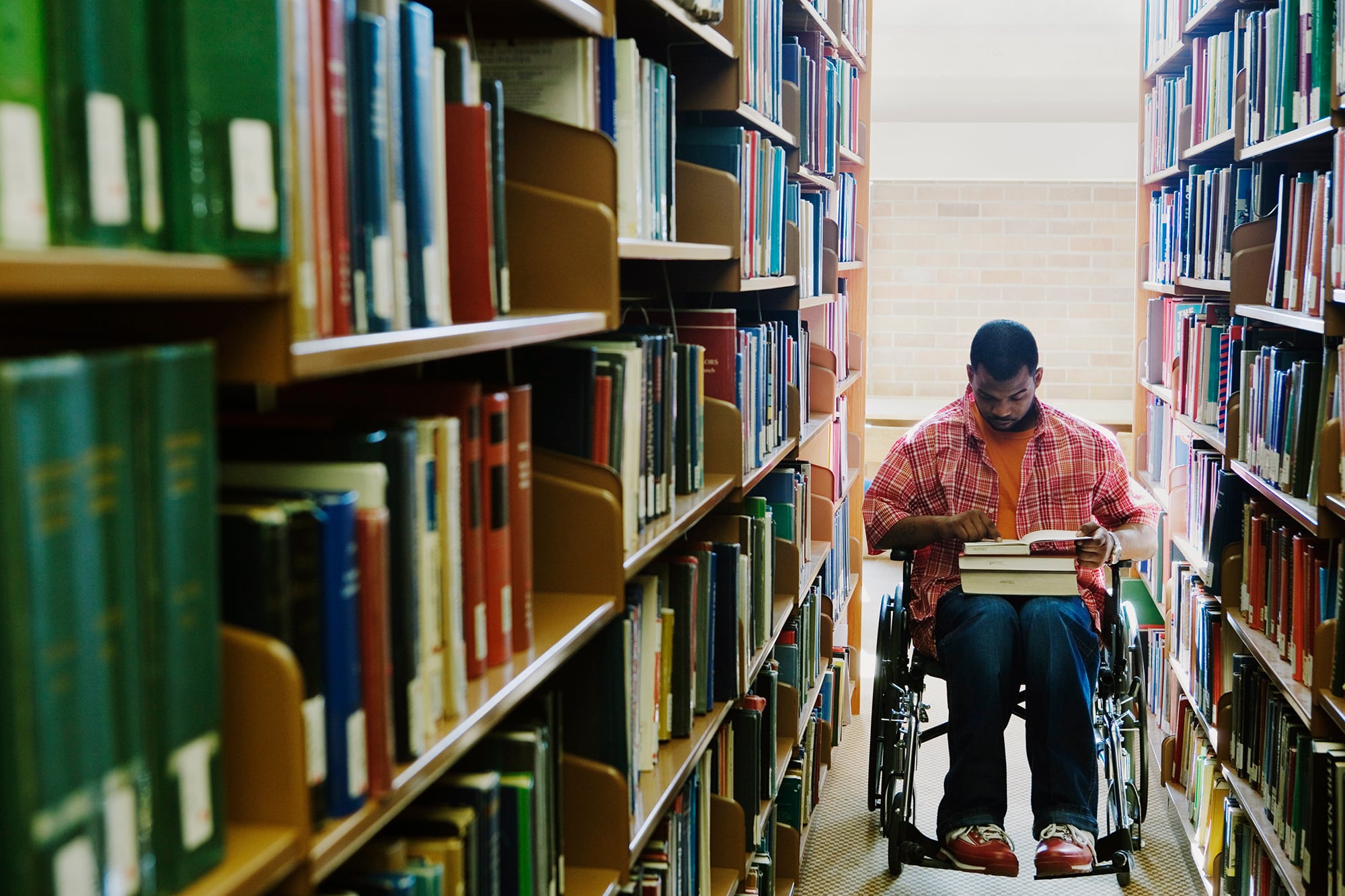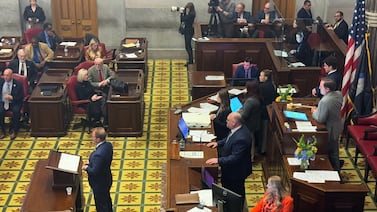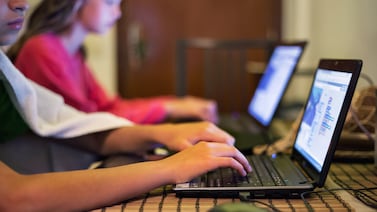Sign up for Chalkbeat New York’s free daily newsletter to keep up with NYC’s public schools.
Fewer than one in three New York City public schools are fully accessible to students with physical disabilities, according to a report released Wednesday by Advocates for Children that calls on the city to ramp up funding for building upgrades.
With the city expected to release its initial five-year capital plan for schools in November, the group is pushing for $1.25 billion to more quickly address major gaps in building accessibility.
That funding, which would run from 2025 through 2029, would allow roughly half of the city’s schools to be fully accessible according to the report, addressing a longstanding problem that has drawn criticism from parents and federal prosecutors alike. The City Council is slated to approve the capital plan in June, though it is typically amended twice a year thereafter.
Officials have made some strides in recent years, in part due to pressure from advocates who successfully lobbied the city to devote $750 million to the effort in the current capital plan, which runs from 2020 through 2024.
The city is on track to boost the share of fully accessible programs from about one in five schools to one in three under the current capital program, according to the Advocates for Children analysis. (The figures do not include certain alternative schools, prekindergarten programs, or charter schools. Nor do they include satellite campuses, as schools may have more than one location.)
“That represents a huge amount of progress, which really shows that when you commit to making schools accessible, you can make a huge difference,” said Sarah Part, a policy analyst at Advocates for Children. “The current lack of accessibility isn’t inevitable.”
Inaccessible school buildings have long represented a barrier for students with physical disabilities, leaving children with few — or even zero — nearby school options. They can also limit students’ ability to take advantage of New York City’s extensive choice system, which allows children to apply for schools outside their home neighborhoods. Nearly 39% of schools have no accessible classrooms for students with mobility needs, according to the Advocates for Children report.
Abraham Weitzman, a rising junior at Columbia University who has cerebral palsy and uses a wheelchair, took the bus more than an hour each way to private school through eighth grade.
“This was while I lived across the street from an inaccessible elementary school,” Weitzman wrote in an email. “I didn’t get the chance to find community in my neighborhood.”
Weitzman eventually attended Bard High School Early College Queens, a fully accessible public school, though the process of navigating the high school admissions process was a challenge. The staff and students on many campuses were welcoming, but he quickly found the buildings weren’t as accommodating.
In one case, he visited a school he liked, only to find his wheelchair didn’t fit in the bathroom, leaving his mother to carry him into a stall.
Although he had a positive experience at Bard, access for students with physical disabilities across the public school system “is disgraceful,” Weitzman wrote. “We must put our efforts into making it better for future students.”
Obstacles for students remain despite building accessibility gains
Federal officials have also spotlighted dire accessibility problems.
In 2015, then-U.S. Attorney Preet Bharara released findings from an investigation that found elementary school accessibility problems in New York City were so severe they amounted to a violation of the Americans with Disabilities Act of 1990. Even though many of the city’s school buildings are more than 100 years old, Bharara found city officials failed to improve accessibility even when renovating older buildings.
Part said the city has taken accessibility improvements more seriously in recent years. But the scale of the problem — and the massive amount of funding required to fully address it — means even if the city heeds Advocates for Children’s call for more funding, about half of schools will still not be fully accessible by 2029, nearly four decades after the Americans with Disabilities Act passed.
Asked about their accessibility goals, city officials declined to say whether they hope to make all schools fully accessible, though they pointed to improvements over the past five years.
“This report acknowledges how far we have come, and the ongoing $750 million commitment in our current capital plan towards our shared goal of making school buildings more accessible,” Kevin Ortiz, a spokesperson for the School Construction Authority, said in a statement, referring to Advocates Children’s analysis.
City officials have made incremental gains, including improvements that render some buildings “partially accessible.” About 20% of the city’s school buildings meet that definition, which means some — but not all — classrooms and facilities can accommodate students with physical disabilities.
In recent years, the city began releasing more granular school-level reports that outline which areas students with physical disabilities can access. Advocates for Children also created a map alongside their report with school-level accessibility information.
Partially accessible buildings can still present significant obstacles. Manhattan mom Yuvania Espino sent her daughter Mia Simpson, who has cerebral palsy and uses a wheelchair, to a partially accessible elementary school in East Harlem that specializes in serving students with disabilities.
But the front entrance was above a small set of stairs, which forced the family to stand by a separate accessible entrance, sometimes in the rain, as they waited for a staff member to unlock the door each day.
Mia took classes on the school’s first floor, but didn’t have access to certain classrooms or support on other levels, including a second-floor gym that helped students with sensory difficulties. Over time, many of her friends moved to classrooms on other floors, which distressed Mia and made her act out, Espino said.

“We don’t know to this day what an elevator would have done for Mia’s academic performance at that school,” Espinso said. The family ultimately decided to send Mia to an accessible private school, where her tuition is covered by the city.
Mia, now 14, is still affected by accessibility problems. She often has to miss performances and other events at her younger sister’s public school because the auditorium is on the second floor and there is no elevator.
“When enrolling your kids in school, no parents should have to think about accessing the building,” Espino said. “I’m thrilled that we’ve taken some baby steps, but we need to buckle up and take some giant leaps.”
Alex Zimmerman is a reporter for Chalkbeat New York, covering NYC public schools. Contact Alex at azimmerman@chalkbeat.org.







